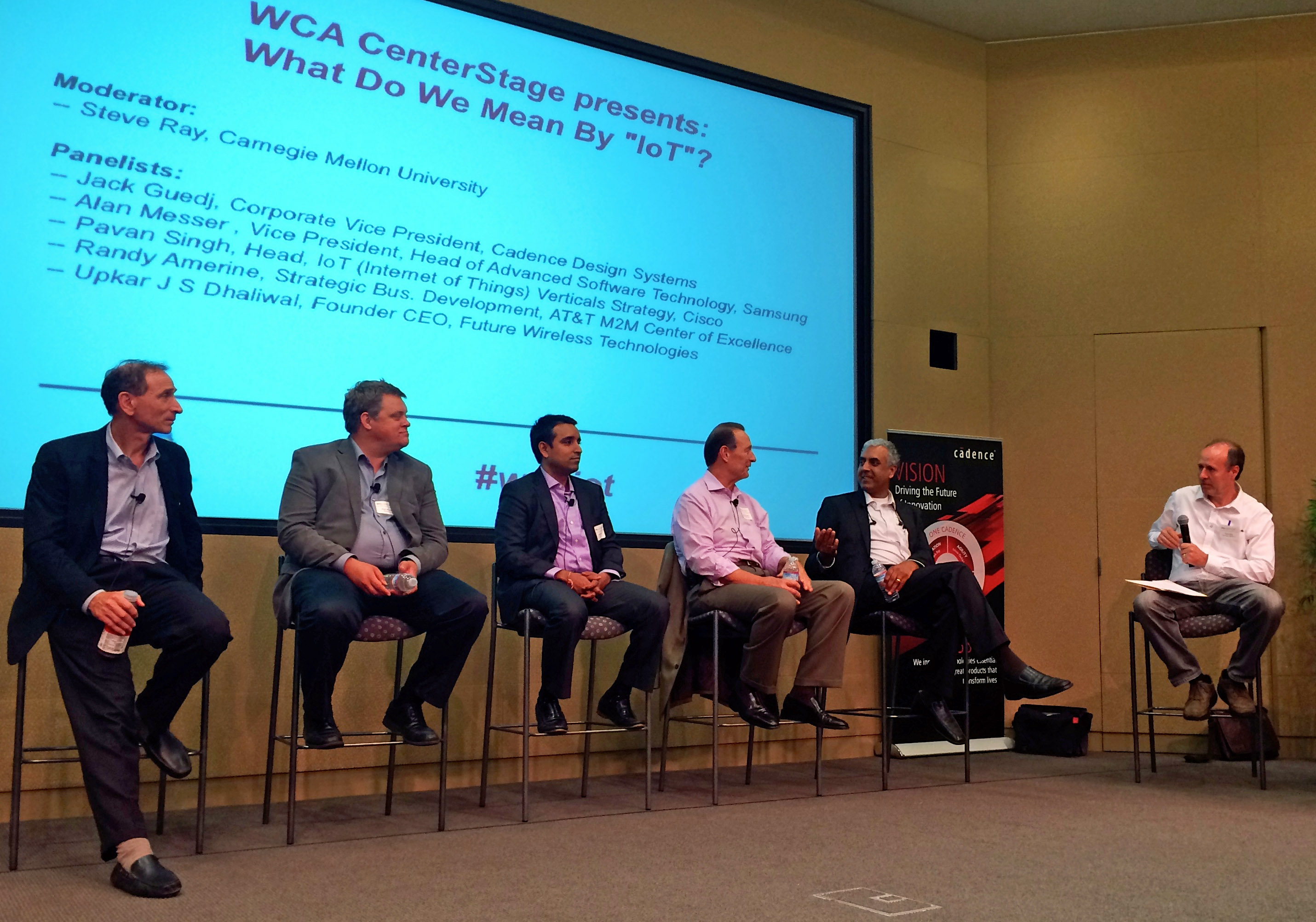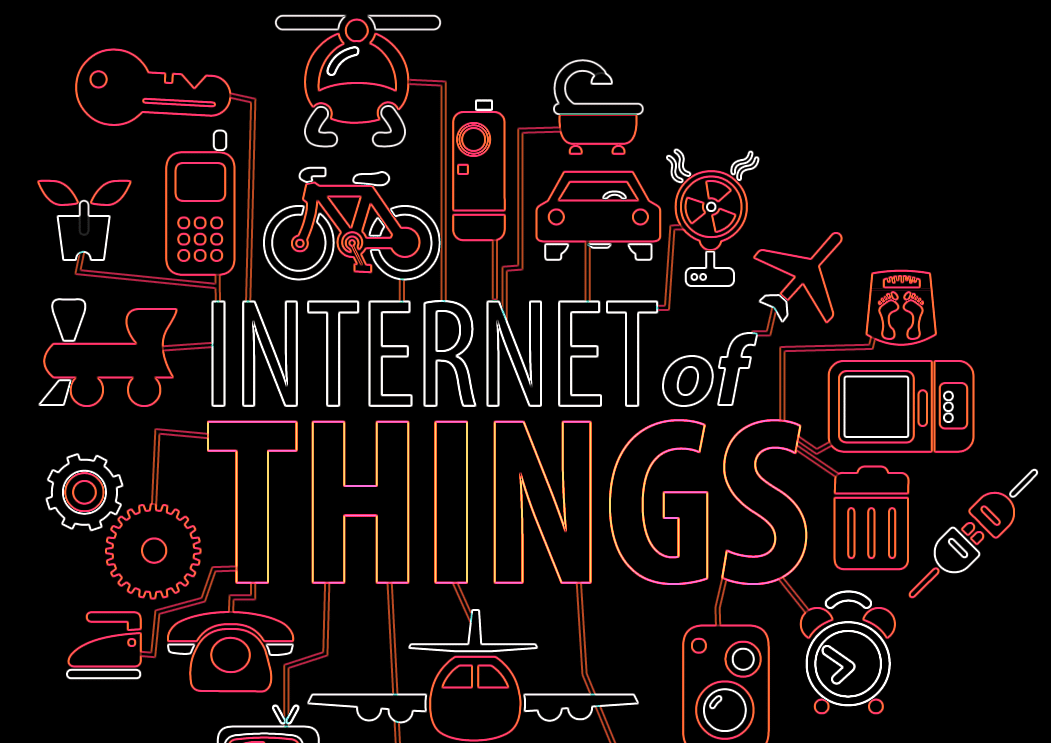It’s not a buzzword, or at least electronic system design is not well served by buzzwordy platitudes about IoT. That was one of many conclusions of a panel of experts at a Wireless Communications Alliance gathering Thursday (Sept. 11), hosted at Cadence.
“Buzzwords aren’t going to help us tell one system apart from another,” said Steven Ray, Distinguished Research Fellow with Carnegie Mellon University Silicon Valley, who moderated the evening panel.
Pavan Singh, head of strategy for Internet of Everything Vertical Solutions at Cisco, later joked, “If you want to do a startup today, what do you want your startup to be called? IoT startup.”
Defining Meaning
Once we set aside the buzzword, “There’s only one certainty,” according to Jack Guedj, corporate vice president with Cadence’s IP Group. “There will be a diverse environment of things. Even within one application, things are ill defined, so you have to be ready… to evolve those products… and build in as much programmability as possible.”

Definitions and buzzwords aside, IoT, or Internet of Everything (IoE, as Cisco calls it) represents enormous electronics design opportunity. Singh estimates that IoE can create $14.4 trillion of value, but we haven’t really begun to capture the value. And to do that, companies are better served by thinking of IoT as “about solving problems, increasing convenience, discovering new things,” Singh added. (The panel, pictured left, featured L-R Jack Guedj, Cadence; Alan Messer, Samsung; Pavan Singh, Cisco; Randy Amerine, AT&T; Upkar J.S. Dhaliwal, Future Wireless Technoloiges; moderator Steven Ray, Carnegie Mellon).
Randy Amerine, strategic business development executive with AT&T’s M2M (machine-to-machine) Center of Excellence, said companies are beginning to grasp the potential.
He noted that when heavy machinery vendors began designing in IoT-related electronics in the mid 2000s, they were only using the data for engineering purposes. But they’re now starting to understand the broader value of the data and how to monetize it (more on this in a bit).
Roadblocks?
So we know there’s a vast market and potential for innovation, but getting from here to there is no cakewalk.
Upkar J.S. Dhaliwal, founder and CEO of Future Wireless Technologies, framed the challenge: “How are we going to connect a trillion devices without wires, seamlessly, with scale, with determinism, and mobility?”
Key challenges ahead include usability, security, interoperability, data ownership, usability, power management, and the design and manufacturing ecosystem.
Security
How do we, particularly in mobile use cases, manage security and authentication across different contexts? You don’t want to have to sign in to every building you enter, every checkpoint you pass.
Guedj said security has to be enabled at the device level:
“The threat is going to come to the simplest device that can be reached. You have to have protection on the simplest devices because they all go through that.”
Alan Messer, vice president and head of Advanced Software Technology at Samsung, said security is “largely an unsolved problem. Many of those devices are too simple for the classic enterprise security solutions.”
Regarding seamless authentication, Amerine noted that the challenge can be met at the SIM card level. He cited an AT&T shipping container-monitoring solution:
“It’ll move into and out of mesh networks on ships, it will move in and out of the LAN networks when it comes ashore. It will also mesh with satellite backhaul on the ship itself. It has its own intelligence so as it moves through each of those connectivity opportunities, it self registers and self connects.”
Interoperability
The other elephant in the IoT room is interoperability. For this vast network to realize its potential, devices need seamless connectivity, and this is a challenge that won’t be solved overnight.
Said Messer:
“It’s going to stay fragmented for some time. Every area has its own requirements both as applied to physical layers and to M2M solutions they need, as well as they applications they use. We’ll see clusters of solutions, but I don’t see clusters of solutions as necessarily a problem. If you have 100 million device market in one (application area) and 100 million devices in another but they’re both in my house, there are people out there who can integrate them at the software level.”
Data ownership
The raucous privacy and ownership conversation that was sparked by social networks’ use of customer data will continue unabated into IoT applications.
Amerine noted that at one point in the commercial environment equipment manufacturers assumed the data was theirs. But customers quickly realized that they could access useful data from their machines, but they were only being fed crumbs.
They responded by demanding data configured to their needs and integrated into their other systems.
Amerine added:
“As the customer understands the value that they can derive from this data, there’s going to be an constant tension between those of us who invest in building it and putting it out there and customers who want to use the data.”
Usability
While the panel didn’t dwell much on the topic, the user experience is only in its infancy.
“I’m a big believer that the biggest problem with the Internet of Things is most people can’t use the devices,” Messer said.
The Power Problem
Effective power management in contemporary IoT systems is in its infancy right now but won’t remain so forever, the panel agreed.
Dhaliwal said:
“Going forward, we’ll see more and more discovery methods and routing methods that will be energy efficient. If you know you’re not going to get air time or access to transmit, why would you wake up and transmit? There’s that coming to us.”
Messer added that new physical layers, integrated SoCs, and integrated processing on the devices will “make many of these common devices much lower power consuming than say a Bluetooth headset just a few years ago.”
Infrastructure
Is the electronics ecosystem prepared to handle the growth of the market, especially when it comes to foundry capacity?
Guedj said “the number of foundries is one thing. How many plants they have is another thing. The big investment is in next-generation processes, but if volume is there, they will build more (capacity). You’ll have a limited set of companies but those will be bigger scale.”
Author: Brian Fuller | Source












